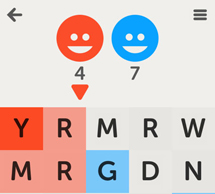This week, we return to our “We Played” blog format, in which we share two different perspectives on playing the same game. This time, we’re sharing our individual thoughts on playing a game called Letterpress – together. Confused? We’ll explain.
Letterpress is a social mobile word-game for iOS. It’s a turn-taking game in which players alternate making words on a five x five grid of letter tiles. Each time a player submits a word, the tiles a player has used turn that player’s color. Once all the tiles have been turned into a color, the player with the most colored tiles wins.
Over the past week, we spent some time playing Letterpress head-to-head, and now we’re going to share each of our impressions of the game, without reference to each other’s notes. Let’s see what we thought, and if we thought the same things!
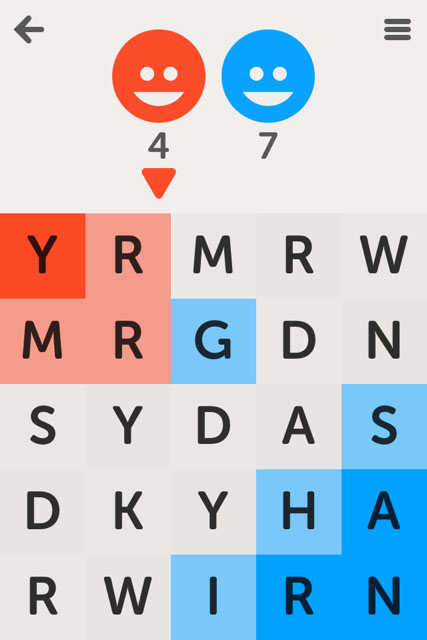
Carla’s Thoughts
1. The learning curve is wacky
My first game was with a stranger and I got my tail handed to me. I had no idea what I was doing. Then I played a friend and made a few connections. Then I started playing Anne and the light bulb went off after our second game when I made what I thought was a great word but lost. Turns out I didn’t understand that I had to both change the squares to my color AND cover all the squares in colors.
So when I insisted my husband play with me, we sat side-by-side on the couch while I walked him through a game. It was much easier on all of us, but not really a realistic tutorial model on a large scale…
2. I really needed the paid version
I’m a cheapskate. I don’t buy the paid version of a game unless I really have to. The Letterpress people put a handful of key features behind the paywall, including the ability to play more than 2 games at a time and, importantly, to see the history of words played in any one game. After a few free games, I found myself annoyed every time I tried to play a word that I had previously played. The game can take a few days to play, depending on the speed with which your opponent replies, and my memory just isn’t great for these kinds of things. It was totally worth the 99 cents.
3. I actually can’t really think of a third point
The absence of a third thought is not necessarily a bad thing. I enjoy the game, more than Draw Something or Words with Friends, less than Contre Jour or Tetris. It’s clever and a nice little thing to play when I have a few free minutes. I like playing with my friends. It’s easy to learn, hard to master. So it has all the right pieces that make it a pleasant experience. It’s just not a knock-out for me. But I still recommend playing it, if that makes sense?
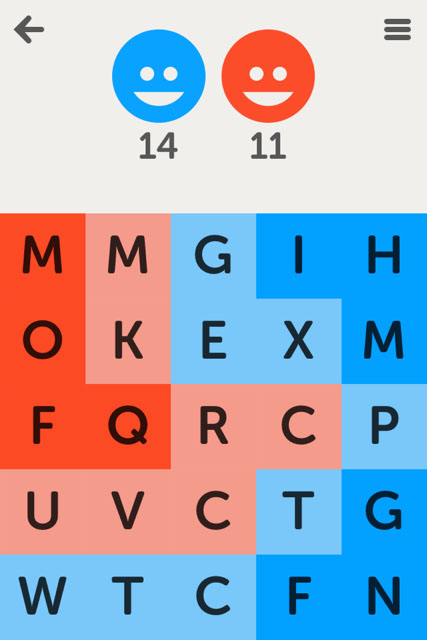
Anne’s Thoughts
1. What the heck am I supposed to be doing?
So I need to admit that Carla and I played at least two or three full games before I understood the rules at all. I knew that I was supposed to be making words out of the given letters, and it was also clear that the goal was to get as many of the letters turned to my color – blue – as possible, but the actual strategy of how to do that completely eluded me. It was only over repeated plays that I realized that turning letters a solid color (which means they can’t be changed to your opponent’s color) is relatively unimportant compared to getting a larger total number of letters in your color. I also hadn’t realized that using your opponent’s letters as opposed to re-using your own is far more effective. Once I figured these things out, games were much faster and more rewarding, and I stopped feeling like my wins or losses were entirely random.
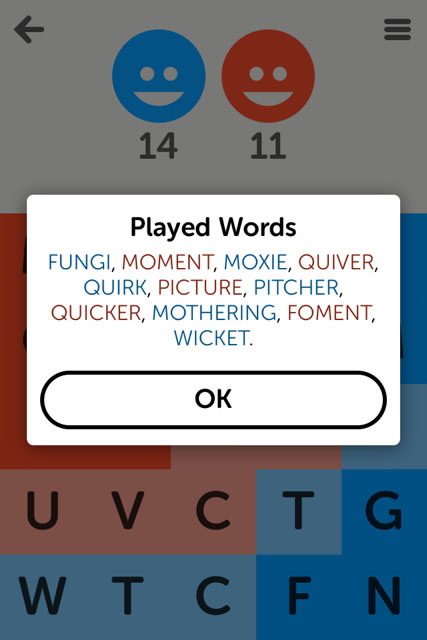
2. Playing with someone you know is different than playing with someone you don’t know
Letterpress is set up through the iPhone’s GameCenter, which allows you to play strangers as well as friends. When I was first trying the game out, I accidentally activated a game with another unknown user. Because I had no idea what I was doing, and my opponent clearly did, playing a stranger felt both totally unfair and incredibly embarrassing. I almost immediately resigned.
Playing with Carla, on the other hand, was great because I knew that she was figuring it out at the same time. We were so much on the same learning curve that we both got the hang of it more or less simultaneously. (We actually texted each other at almost the same time, “I get it now!” which brings me to a side note — social games should have messaging features!) In this case, knowing my opponent and understanding that she was coming at it from a similar place allowed me to stick with the game long enough to figure out how to play it and enjoy it.
3. Way to keep down the vowel count
I love a lot of word games, including Words with Friends and the old stalwart Scrabble board game, but there’s one thing about them that vexes me. I always, always, always end up with a million vowels and no consonants. I don’t know if the creators of Letterpress shared my frustration, but one of the charming things about this game is that the boards tend to have very few vowels (two or three within the context of a 25-letter board). This is what we call good game balancing – tuning a game once the basics of the mechanics are figured out to make sure that it’s not too easy or too difficult – and they did a great job, putting heavy restrictions on vowels and other key letters. This makes creating additional words nicely challenging, and prevents you from just adding suffixes to all of your words to make them longer and run up the score.
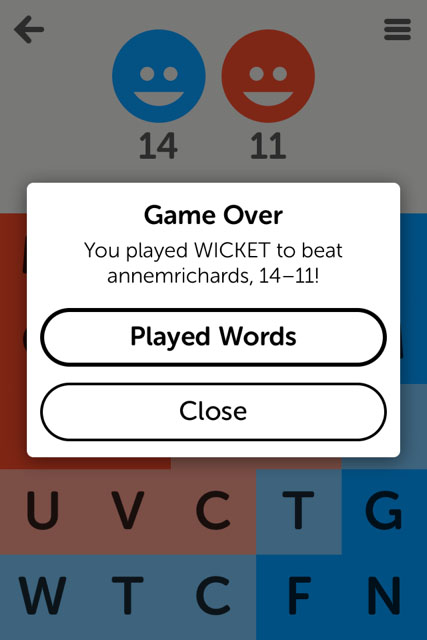
As it turns out, our experiences playing this game were pretty similar. The learning curve was steep, and we each might have given up trying to figure it out if we hadn’t known each other. But in the end, we’re still playing which is always a good sign. Now it’s just an issue of keeping track who has more wins so whoever’s in the lead can commence taunting!
Have a suggestion for the next great game that we should play? Email us at kidsGotGame@noCrusts.com or message us on Twitter @noCrusts.

